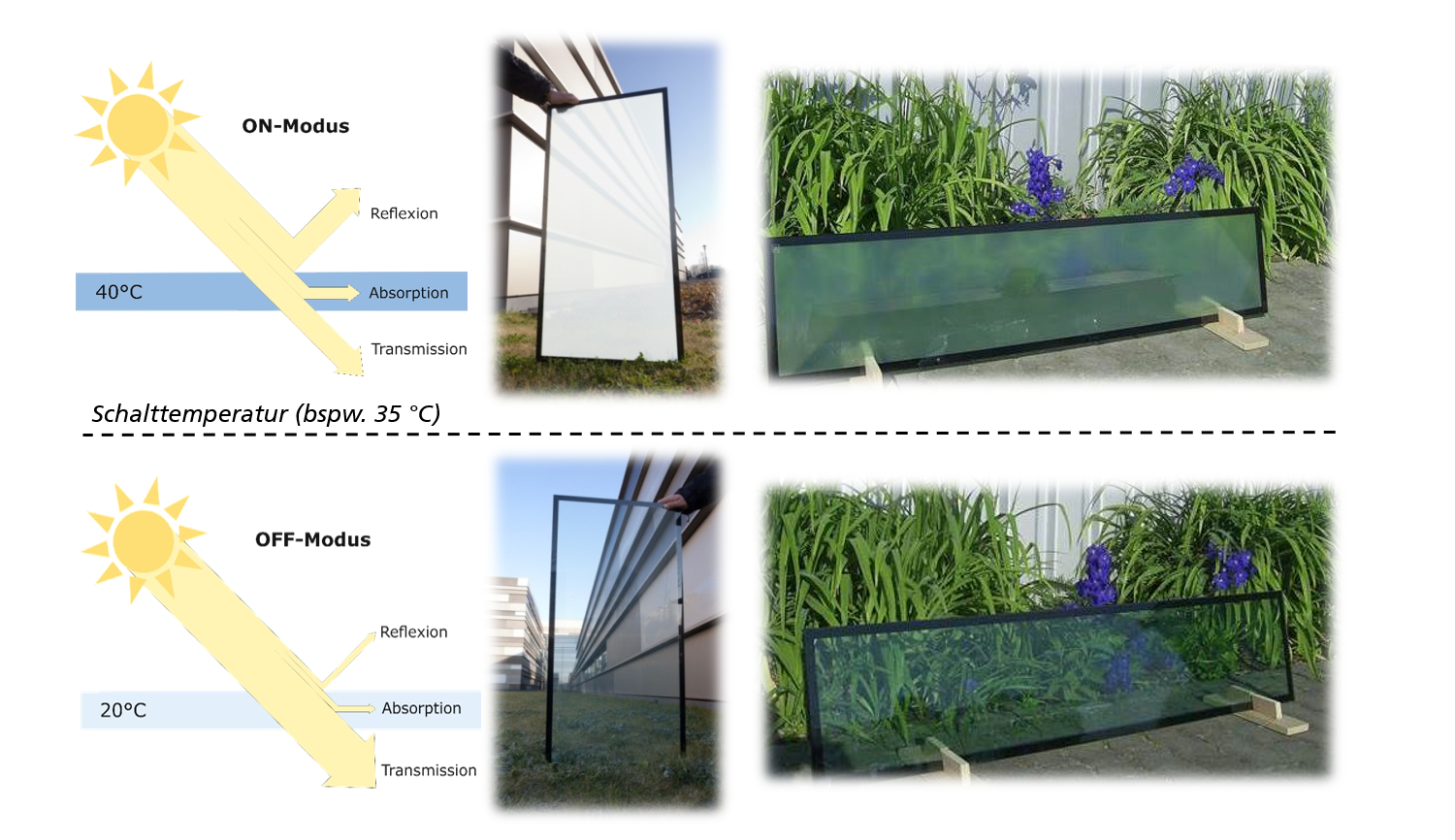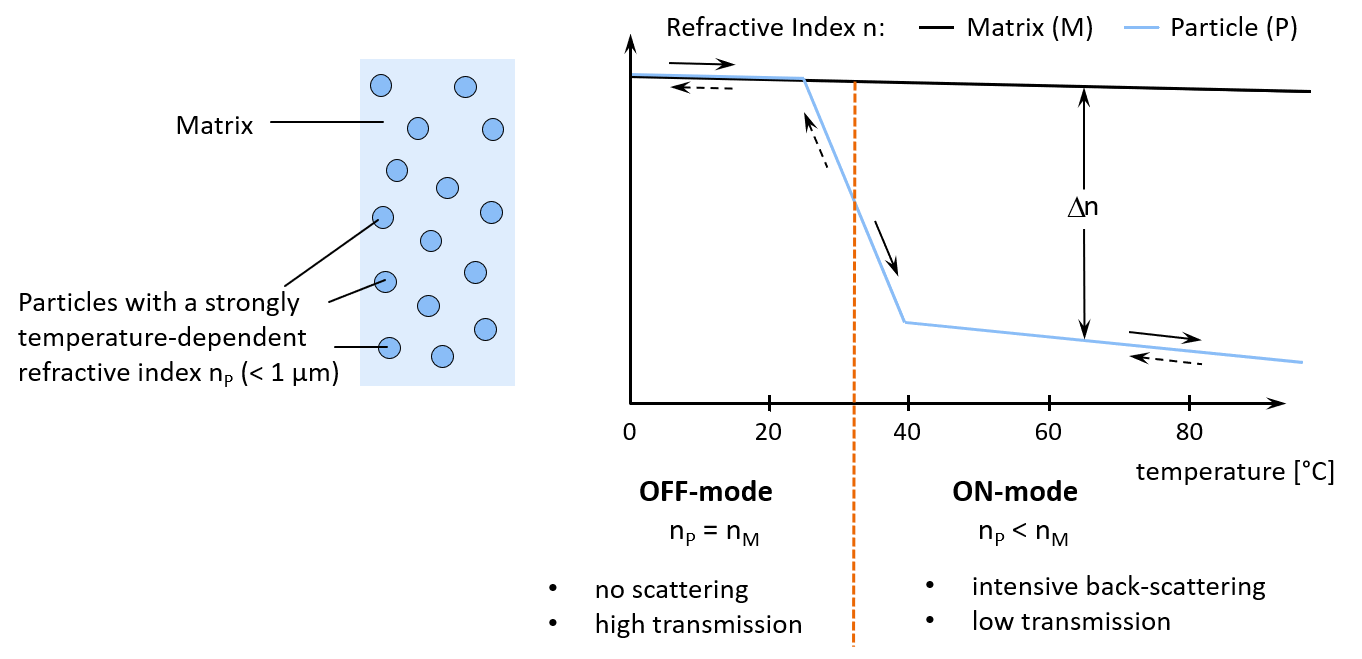Regulation of transparency - Thermotropic polymers
Thermotropic polymers automatically switch from a clear to a strongly scattering state when the temperature rises. They are therefore suitable for applications in solar, glare and overheating protection and as light guide.
These materials reduce the energy requirements of buildings. In winter, the solar heat reduces the heating energy requirement. In summer, a large part of the solar radiation is reflected, thus reducing the cost of cooling and ventilation.
Another area of application is solar collectors where thermotropic materials act as overheating protection. At temperatures above 80 °C, the collectors are protected from further solar heating and heat damage.
- Adaptation to numerous matrix materials
- Adjustable switching temperature
- Adjustment of the reflected wavelength range


